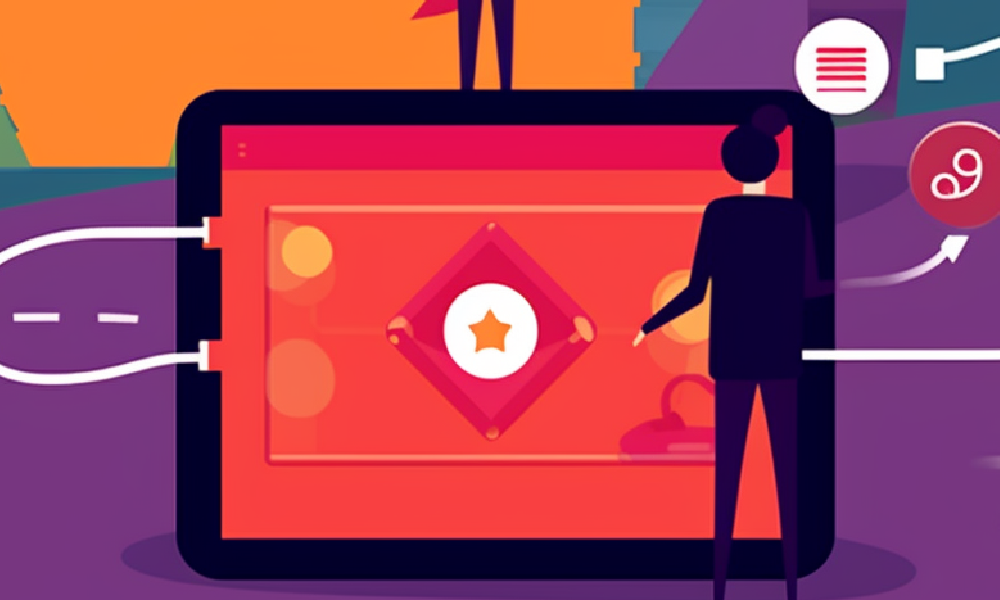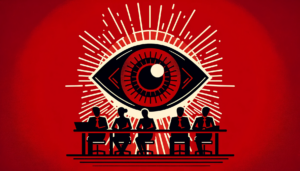Gamified onboarding: Corporate buzzword or crucial HR strategy?
- 6 Min Read
“Gamification isn’t just some trendy buzzword; it’s a powerful tool we can use to tap into human psychology.” Craig Hamill shares how to implement gamified onboarding that enhances the employee experience.
- Author: Craig Hamill
- Date published: Jun 6, 2023
- Categories

As HR leaders, we’re well-acquainted with the concepts of onboarding and gamification. But are we leveraging them as effectively as we could be? To truly embrace the digital age, we must continually reevaluate our methodologies and optimize processes if we want to get the most out of them. So, why should you bother with gamified onboarding in the first place? Does it really yield that much of a benefit? Let’s dig deeper.
The concept of gamified onboarding
First things first, it’s important to acknowledge that gamification isn’t just some trendy buzzword; it’s a powerful tool we can use to tap into human psychology. Through reward and recognition systems and competitive elements such as leaderboards and badges, gamification provides a whole host of benefits to both learners and organizations alike.
By designing comprehensive experiences that engage employees, build communities, and create knowledge-sharing opportunities from day one, gamifying your onboarding processes is all about genuinely enhancing the employee experience (EX) – not just jumping on the next bandwagon. Storytelling, for instance, can be a game-changer when it comes to gamified onboarding, significantly boosting engagement (and learning outcomes) by placing the employee’s journey at the heart of the process.
The benefits of gamified onboarding
Boosting employee engagement and productivity
Harnessing the power of gamified onboarding can elevate the level of employee engagement and productivity like never before. The impact of this innovative approach is clear and compelling. It goes beyond the surface, instilling a deeper sense of accomplishment and fostering loyalty within your team.
The numbers back this up. An impressive 89% of employees report that gamification makes them feel more productive. Additionally, 88% of employees acknowledge that it brings about a significant rise in their overall job happiness, evidencing a direct impact on EX.
Improving retention Rates
We’ve all felt the sting of early attrition. It’s a significant setback for organizations, both in terms of cost and morale. But here’s the good news: a well-structured, engaging onboarding process can be a powerful antidote. When employees feel valued and engaged from the get-go, they’re more likely to stick around. The evidence? A study found businesses with high employee engagement experienced 43% less turnover. That’s a game-changer in any HR professional’s book.
Accelerating learning and skill development
The beauty of gamified onboarding is in its capacity to transform learning into an engaging, interactive experience. This innovative approach not only fosters knowledge retention but also encourages self-directed learning, cultivating a culture that prizes curiosity, adaptability, and continuous improvement.
Implementing gamified onboarding in your organization
Assessing your organization’s needs
The first step towards implementing gamified onboarding is a comprehensive understanding of your organization’s unique needs, which includes considerations for diversity and inclusion. It’s about identifying areas for improvement in your current onboarding process, ensuring it is inclusive and accommodates the diverse backgrounds, experiences, and needs of all your employees.
During this assessment, consider how leveraging technology, automation, and the power of digital can enhance the onboarding experience for all employees. For instance, HR analytics can provide invaluable insights into the patterns, behaviors, and preferences of your workforce. Such data-driven insights can inform the design of your onboarding program, ensuring it resonates with all your employees and meets their specific needs.
On top of this, you can use data to benchmark the effectiveness of your gamified processes, thus allowing you to measure its impact further along in the employee journey. This includes monitoring the inclusivity of the program and ensuring it equally engages and benefits all employees.
Designing a customized onboarding experience
While integrating elements like points, badges, and leaderboards, it’s essential to maintain a balance between competition and collaboration. A healthy competitive spirit can drive motivation, but an overemphasis on competition can compromise teamwork and camaraderie. On the other hand, collaborative elements can foster a sense of community and mutual support among the new hires.
Furthermore, consider accessibility and the needs of neurodiverse employees. Neurodiversity refers to the range of differences in individual brain function and behavioral traits. Employees with conditions like ADHD, autism, dyslexia, and others might have different learning needs and preferences.
Some employees might benefit from more visual or hands-on learning experiences, while others might require more quiet, focused environments. This is where technology like Virtual Reality (VR), Augmented Reality (AR), or Extended Reality (XR) can help. These technologies can create a unique, interactive learning environment, making the onboarding process more engaging and memorable, regardless of their learning preferences.
User testing, stress testing, and feedback
In the real world, the best-laid plans can often face unexpected challenges. That’s why adopting a pragmatic approach to the implementation of your gamified onboarding program is crucial. One of the most effective ways to ensure the robustness of your program is to conduct user and stress testing.
User testing involves piloting the program with a small group of employees, who can provide initial feedback. This process helps identify any glitches, bottlenecks, or areas that may not be as user-friendly as intended.
In parallel, stress testing is a valuable tool to push the program to its limits. It’s about ensuring the system can handle high loads, multiple users, and intense periods of activity. By purposefully putting pressure on the system, you can uncover any underlying issues that may not surface during normal usage.
Integration with existing processes
Contrary to popular belief, gamified onboarding should enhance, not replace, traditional methods. A balanced approach involves integrating gamified elements with existing processes, ensuring a comprehensive experience that utilizes the benefits of both. You could use traditional methods for delivering critical information and guidelines, while gamified elements could be used for interactive learning and skill development activities.
Watch out for the pitfalls of gamified onboarding
Gamified onboarding, while promising, isn’t without its potential pitfalls. If not implemented correctly, poor experiences can lead to confusion, disengagement, or even a sense of alienation among new hires. With this in mind, it’s crucial to consider the ‘how,’ ‘when,’ and ‘who’ involved in the process, as every business is unique.
As HR professionals, we must challenge the status quo, and reimagine what the employee journey looks like. Just how early in the pre-boarding/onboarding process can we begin implementing these strategies?
While the correct answer for your organization is likely going to be different from mine, at the very least, we must ensure that we are not just keeping up with the times, but that we are striving to become trendsetters in our respective industries. After all, the future of work is in our hands.
________________
Craig has over 20 years’ experience working in Learning and Development. Craig’s extensive consultative experience has helped global insurance clients of all sizes to develop solutions that ensure continuous learning adoption and high levels of employee engagement. He is passionate about people development and his strong understanding of the links between learning and business means he is highly respected across the global L&D community in regulated markets.









